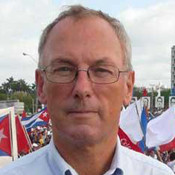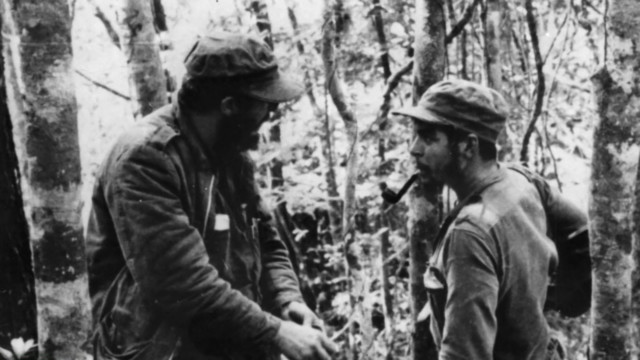Monday marks the 50th anniversary of the death of Che Guevara, the Argentine-born guerrilla leader of the Cuban Revolution. He was executed in Bolivia on October 9th, 1967. Today his remains are in a Mausoleum in the Cuban city of Santa Clara.
CGTN’s Michael Voss was given rare access to the site.
Ernesto Che Guevara’s mausoleum is in Santa Clara, some 300 kilometers from the capital Havana. It was there that Che led and won a decisive battle against re-enforcements sent by train from Havana during the Cuban revolution.
Within a day of Che taking Santa Clara, the U.S. backed dictator Fulgencio Batista fled Cuba and Fidel Castro claimed victory.
Che Guevara’s remains are there, along with many of the other guerrilla fighters who died in Bolivia.
Beneath the mausoleum is a museum dedicated to Che Guevara. It covers everything from his childhood in Argentina to his death in Bolivia.
Almost five million visitors from around the world have been there since the museum first opened.
“Che is a paradigm for new generations,” a staff member of the museum, Faustino Moriano says. “He was a man capable of renouncing everything to carry out his ideas and give his life if necessary.”
Che Guevara grew up in Rosario, Argentina, an asthmatic child who went on to train as a doctor. On his classic motorcycle journey across Latin America, he became radicalized by the poverty he saw.
Che met Fidel Castro, who was in exile in Mexico, and agreed to join his rebel force to fight in Cuba. Initially, he was there as a medic but soon rose to become a leading military commander.
After the revolution, Che Guevara became Minister of Industries, helping launch the agrarian reform. But he was quickly tired of his government roles, and, shaving off his beard and trimming his hair, left in disguise to foment revolution elsewhere.
Che died trying to lead an uprising in Bolivia, his body buried in a secret grave. Its location was re-discovered in 1997 and Che’s remains returned to Cuba. Tens of thousands of Cubans came to pay their respects and lined the 300 kilometer route as his coffin was taken from Havana to Santa Clara.
Now, to mark the 50th anniversary of his death, thousands of Cubans will gather at his mausoleum, a tribute to this island’s adopted son.
 CGTN America
CGTN America


